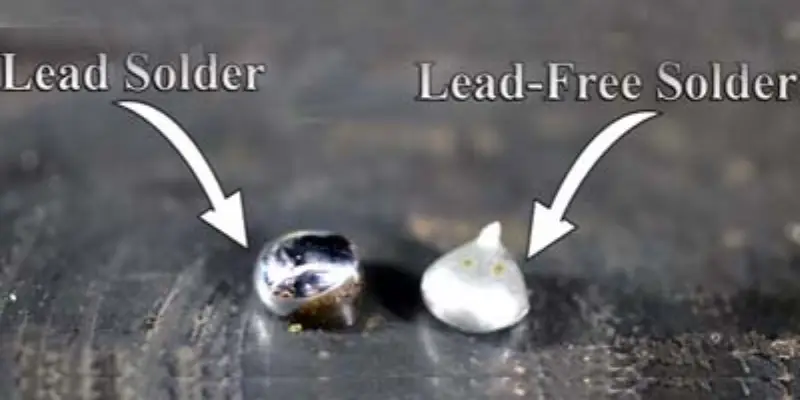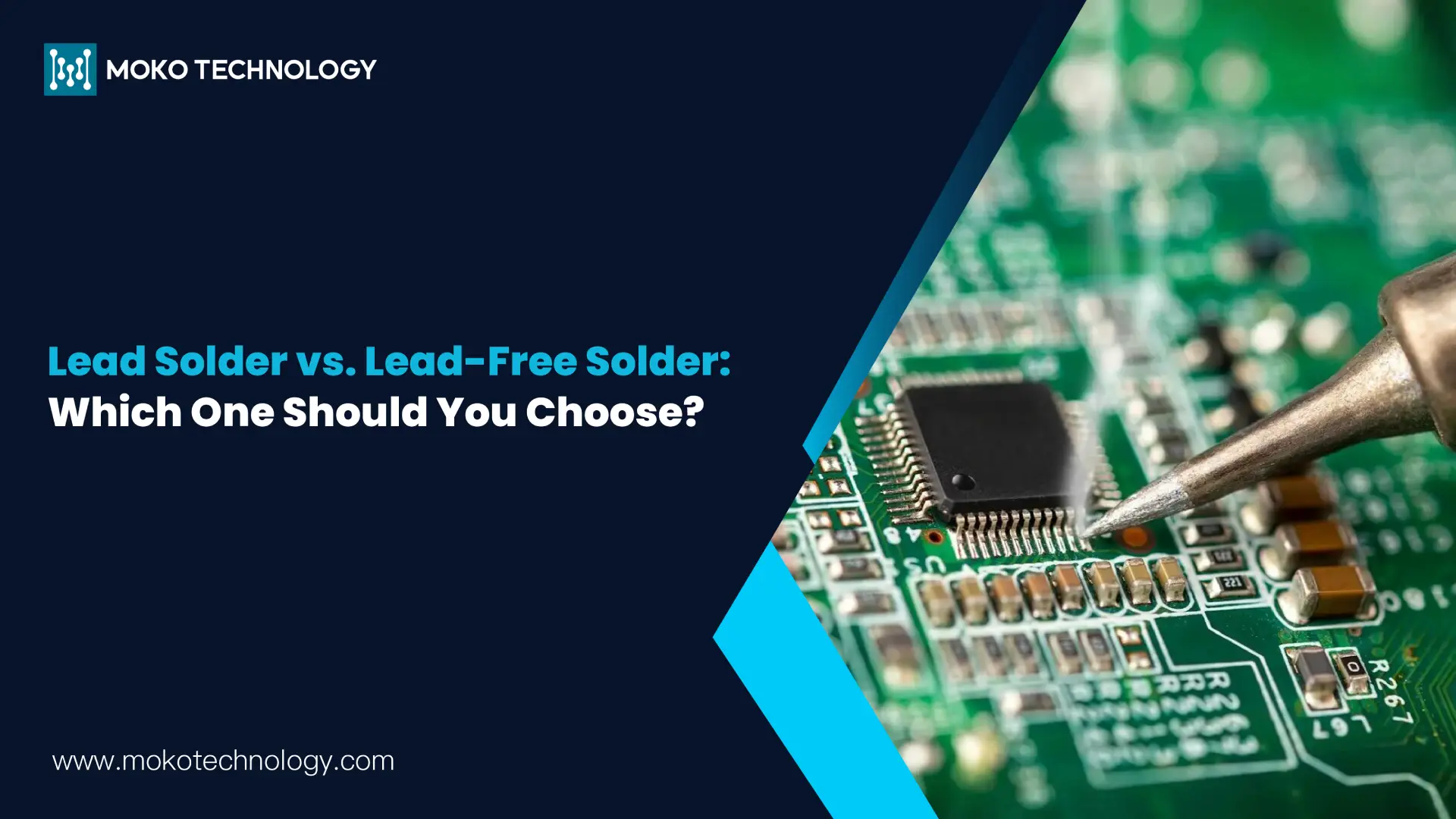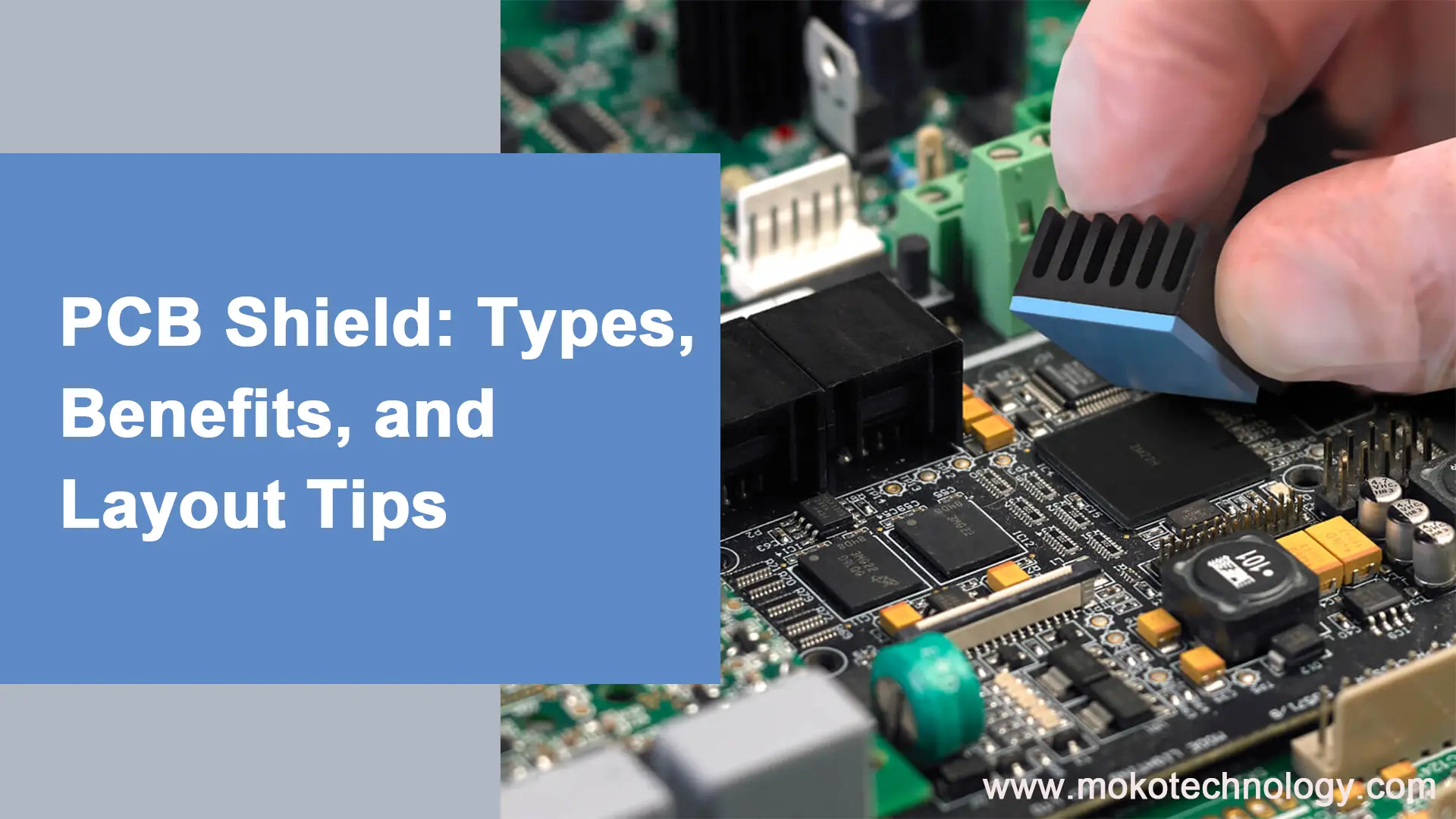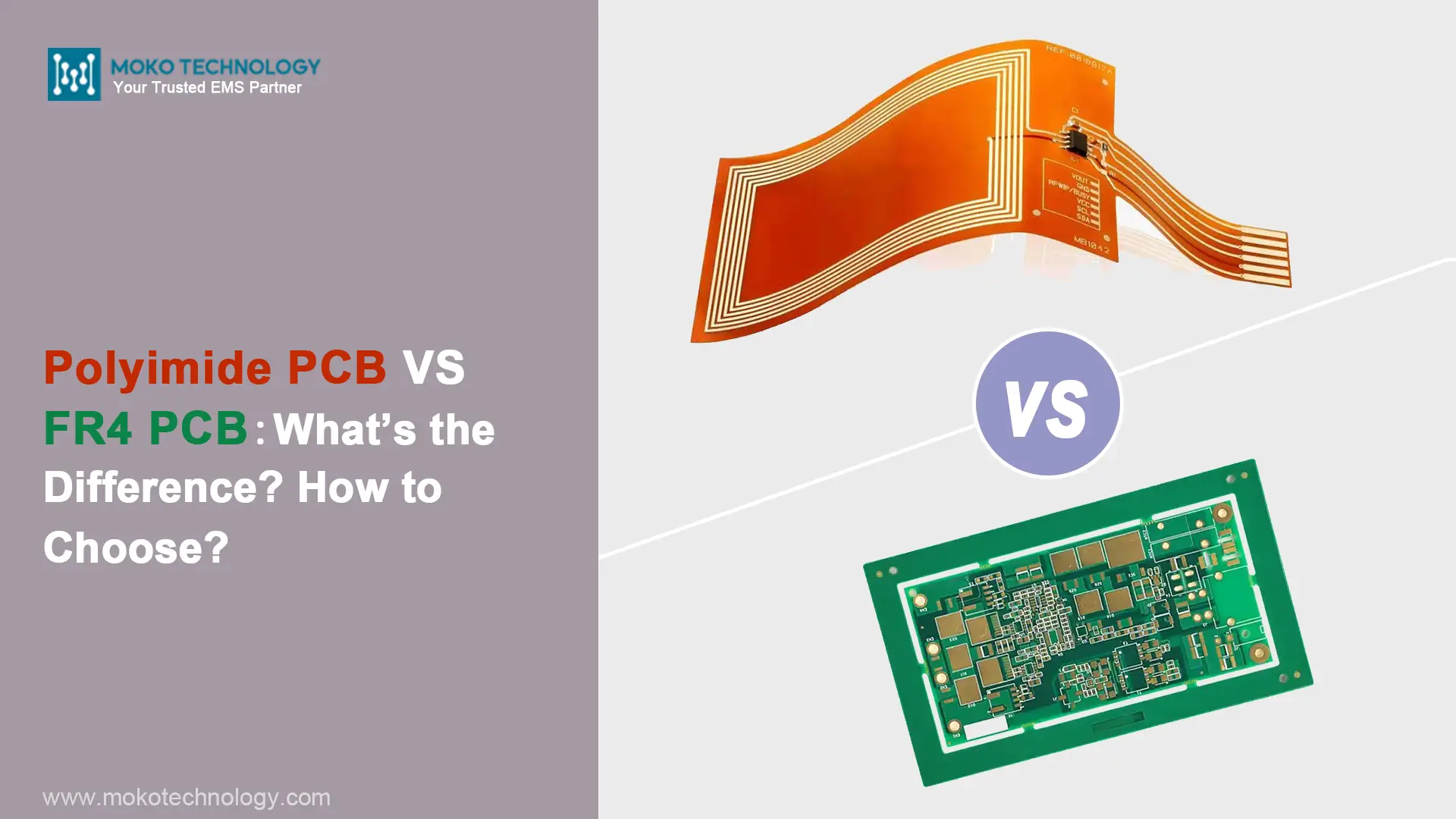Pendant très longtemps, la soudure au plomb, composée en grande partie d'alliages d'étain et de plomb, a été largement utilisée en raison de son faible point de fusion. néanmoins, les préoccupations en matière de santé et d'environnement ont poussé l'industrie vers des produits sans plomb. La dynamique de ce changement a été orchestrée par des réglementations telles que RoHS (Restriction des substances dangereuses), en particulier sur le marché européen, réduire le contenu dangereux des gadgets électroniques. Dans ce blog, nous explorerons les principales différences dans le débat entre la soudure au plomb et. soudure sans plomb, examiner leurs propriétés, avantages, pour vous aider à prendre une décision éclairée pour votre prochain projet.
Qu'est-ce que la soudure au plomb?
La soudure au plomb est la bête de somme de assemblage électronique tout au long des nombreuses décennies. Celui-ci est principalement composé d'étain et de plomb, bien que l'étain soit présent dans des proportions plus importantes que le plomb dans la plupart des cas, représentant généralement 60% de l'alliage tandis que le plomb sera 40%. Il présente plusieurs avantages tels qu'un faible point de fusion, à bas prix, et facile à utiliser. pourtant, le plomb est toxique, cette substance dangereuse présente de nombreux aspects négatifs pour la santé humaine des personnes qui travaillent avec elle. Cela pollue également le sol et l’eau, ce qui rend l'élimination de ces produits contenant du plomb un gros problème.
Qu'est-ce que la soudure sans plomb?
Les tentatives d'utilisation de soudure sans plomb sont principalement dues aux impacts qu'elle a sur la santé humaine ainsi que sur l'environnement.. Les soudures sans plomb contiennent de l'étain et peuvent contenir des ajouts d'argent (Ag), cuivre (Cu), et/ou bismuth (Bi). Les matériaux de soudure ne contenant pas de plomb sont conformes aux cadres juridiques mondiaux, à savoir RoHS, réduire les risques pour la santé des travailleurs et des consommateurs. Ils ont des limites telles qu'un point de fusion élevé ainsi que des problèmes de fiabilité..
Soudure au plomb ou soudure sans plomb: Comparer les principales différences

- Point de fusion: La soudure au plomb a une température de fusion plus basse, il est donc plus facile de travailler avec. Alors que la soudure sans plomb nécessite des températures plus élevées, poser des défis en matière de gestion thermique.
- Conductivité électrique: Ils offrent tous deux une bonne conduction électrique, bien que la soudure sans plomb actuelle puisse avoir une résistance légèrement plus élevée attribuée au manque de particules de plomb..
- Force mécanique: Soudures sans plomb, dans la plupart des cas, créer des joints de soudure avec une ductilité inférieure à celle des joints de soudure au plomb. Cela signifie que les joints de soudure sans plomb sont plus fragiles et plus sujets à une défaillance lorsque l'objet est soumis à des contraintes ou à des cycles thermiques..
- Fiabilité et durabilité: Les joints de soudure au plomb sont généralement moins susceptibles d'être sensibles au stress et à la fatigue que les joints de soudure sans plomb.; ce dernier pose un grand défi lors de la conception de produits nécessitant davantage de tests, surtout lorsqu'il est soumis à des conditions contraignantes.
- Capacités de mouillage: La soudure au plomb a de meilleures caractéristiques de mouillage que la soudure sans plomb, ce qui améliore la formation de meilleures articulations. Bien que la soudure sans plomb puisse réduire la quantité de matériaux toxiques utilisés dans le processus, ils sont généralement beaucoup plus mal mouillés.
- Coût: La soudure au plomb est moins coûteuse, principalement parce qu'elle est plus facilement accessible et comparativement plus facile à fabriquer., tandis que les soudures sans plomb sont relativement coûteuses en termes de matières premières et nécessitent des outils et des appareils coûteux à utiliser..
- Problèmes de santé: Le plomb est dangereux pour la vie et la santé humaine, tandis que les soudures sans plomb aident à protéger les personnes de leurs impacts négatifs, rendre les conditions de travail plus sûres, et diminuer la probabilité et les effets de la contamination par le plomb.
| Propriété | Soudure au plomb (Sn-Pb) | Soudure sans plomb |
| Point de fusion | Inférieur (183°C pour Sn63/Pb37) | Plus haut (217-227°C pour les alliages courants) |
| Conductivité électrique | Un peu mieux | Légèrement plus bas |
| Force mécanique | Plus ductile | Moins ductile, plus fragile |
| Fiabilité et durabilité | Plus tolérant au stress et à la fatigue | Nécessite une conception et des tests minutieux |
| Capacités de mouillage | Supérieur | Propriétés mouillantes moins bonnes |
| Croissance des moustaches d’étain | Risque moindre | Risque plus élevé, selon l'alliage |
| Impact environnemental | Haute toxicité due à la teneur en plomb | Toxicité moindre, mais certains constituants peuvent être dangereux |
| Coût | Généralement inférieur | Généralement plus élevé |
| Problèmes de santé | Toxique, présente des risques pour la santé | Plus sûr, pas de contamination par le plomb |
| Conductivité thermique | 50 (W / m) * 1 k * 1 s | 73(W / m) * 1 k * 1 s |
Soudure au plomb ou soudure sans plomb: Comment choisir?
Maintenant que nous comprenons les avantages et les inconvénients de la soudure au plomb et de la soudure sans plomb, La question se pose: lequel choisir? Il y a un certain nombre de choses à considérer avant de prendre la décision finale.
Conformité réglementaire
Si votre gouvernement interdit l'utilisation du plomb, ou si les produits que vous développez seront vendus dans des pays européens qui suivent la directive RoHS, il n'y a vraiment pas d'autre solution que d'utiliser de la soudure sans plomb.
Besoins des applications
Les exigences de votre projet peuvent jouer un rôle important dans la définition du type de soudure que vous envisagez d'utiliser.. Par exemple, aérospatial, l'électronique avionique et médicale continuera à préférer la soudure au plomb. Il a été bien testé et prouvé pour maintenir une fiabilité élevée même dans les environnements les plus difficiles. Alors que les produits de consommation sans grand souci de fiabilité feront des compromis sur les soudures sans plomb pour se conformer à la réglementation..
Compatibilité des équipements
La soudure au plomb peut poser certains problèmes de compatibilité avec les équipements existants. Pour soudure sans plomb, il est nécessaire de moderniser les machines avec des températures de travail élevées, y compris la soudure au plomb peut poser des problèmes de compatibilité avec les équipements existants.
Considérations de coût
Bien que la soudure au plomb soit relativement moins chère, le total des dépenses en tenant compte d'autres facteurs, y compris les risques pour la santé, sanctions pour violation des lois sans plomb, et le coût du passage aux produits sans plomb doit également être pris en considération.
Fiabilité à long terme
La durabilité des joints de soudure est un facteur important dans le succès à long terme du produit. Il est également important que le produit soit soumis à des conditions environnementales difficiles.. Les joints de soudure sans plomb peuvent être plus sensibles que les joints en plomb et peuvent nécessiter d'autres tests et contrôles de qualité..
Dernières pensées
La soudure au plomb a été utilisée au fil des années en raison de sa fiabilité et de sa relative simplicité.. pourtant, la soudure sans plomb prend lentement sa place en raison de préoccupations environnementales et des implications les moins dangereuses pour la santé. En conclusion, tandis que la soudure au plomb s'est avérée très fiable par rapport à la soudure sans plomb., les tendances futures de l'industrie électronique seront caractérisées par des soudures respectueuses de l'environnement. La décision de continuer à utiliser la soudure au plomb ou de passer à la soudure sans plomb variera d'un projet à l'autre en raison de contraintes telles que les normes existantes., et coût par rapport à la fiabilité.




